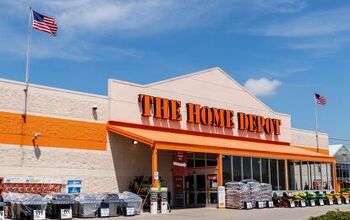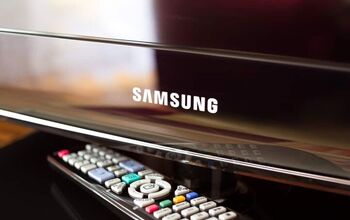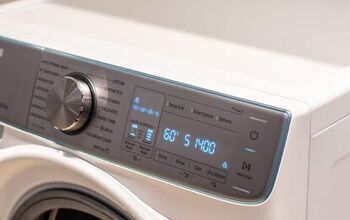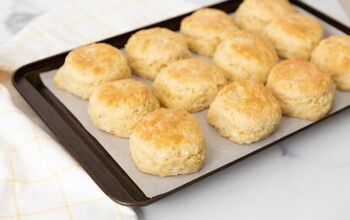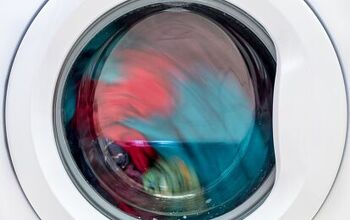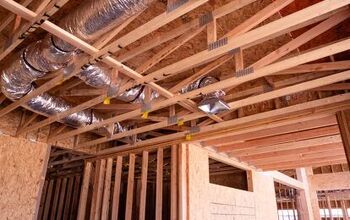How To Unclog A Refrigerator Drain Tube (Quickly & Easily!)

You pull a snack out of the refrigerator, and you notice some standing water located below the vegetable bin. Instantly fear strikes as you anticipate buying a new refrigerator in a hurry. Luckily, there’s a good chance that the standing water you see in the fridge is the result of a clogged drain tube.
Unclogging a drain tube is a straightforward procedure that many homeowners can accomplish themselves. The process involves locating the drain tube, removing any visible debris, then flushing the drain tube to create a clear and open path for defrosted water to follow. With regular drain tube maintenance, it is possible to avoid a clogged drain tube for the life of your refrigerator.
Having water drain through your refrigerator is a regular aspect of a self-defrosting refrigerator, but pooling and clogged water can be damaging. A clogged drain tube can lead to catastrophic leaks, so it is essential to check and clean your drain tube regularly. Minimal tools are required to remove debris from your drain tube, and many homeowners will be able to complete this task alone.
Do You Need Appliance Repair Services?
Get free, zero-commitment quotes from pro contractors near you.

What Is the Drain Tube Used For?
To keep your refrigerator fresh and operational, it is common for your refrigerator to go through a self-defrost cycle. This cycle warms the temperature inside the fridge, which can produce additional water and moisture. In a normally functioning refrigerator, the water collected will funnel down a drain into a pan at the fridge’s bottom, where the water will simply evaporate. This procedure helps to keep your refrigerator cycled and allows the water to evaporate safely.
What Are Signs My Drain Tube is Clogged?
When your drain tube is clogged and fails to drain water away from the fridge appropriately, you will usually notice water pooling in the fridge. Pay attention to the area below the fruit and vegetable bins and the tray under the freezer. Another sign that your drain tube may be clogged is ice collected in the bottom of the freezer.
Why Did My Drain Tube Become Clogged?
Many self-defrosting refrigerators have a drain tube that helps to channel the water away from the fridge, where it can simply evaporate. Depending on the location of the drain tube, food debris can quickly enter the drain. This occurrence is especially true for drain tubes that are located under the fruit and vegetable bins. Even the smallest onion peel or spinach leaf can cause a massive clog in your thin drain tube.
Even if you do not have physical debris entering your drain tube, ice can cause a clog to form. Sometimes, if the refrigerator or freezer is fully stocked, the temperature will drop lower than usual inside the fridge. This lower temperature can cause the drained water in the drain tube line to freeze. When drained water hits the ice blockage, there is no room for the water to drain away, which leads to standing water and potential leaks.
How To Unclog a Drain Tube
Luckily, if you know your refrigerator’s make and model and have a moderate level of DIY knowledge, you can help repair a clogged drain tube yourself. Follow the below steps to keep your refrigerator in good working order.
Tools Needed
Unclogging a stuffed drain tube is an easy project that requires very few tools to complete the job. At a minimum, you will need:
- Screwdriver (if you don’t have, Click Here)
- Turkey Baster
- 1/4 Flex Tube (Optional)
- Cooler to Store Frozen Food (Optional)
- Large, Plastic Syringe (Optional)
Step 1: Unplug the Refrigerator
For safety, unplug the refrigerator. It may help to slide your refrigerator away from the wall a few feet to give you more room to work. Because the process to unclog the drain tube may be lengthy, be sure to remove any frozen foods from the freezer and safely keep them in a cooler through the process.
Step 2: Locate the Drain Tube
Every refrigerator manufacturer will have the drain tube for the defrost cycle in a different location. Some common places to find the drain tube include below the fruit and vegetable bins, the back of the refrigerator, or the bottom of the fridge’s freezer portion. Sometimes, finding your owner’s manual or looking the model up online will help you locate the drain more quickly.
Step 3: Free the Drain Tube
Visually inspect the drain tube and identify any food debris or ice causing the drain to clog. If you notice ice, you can use a hairdryer set to a low heat temperature to melt the ice and free the clog. Run the hairdryer along the drain tube line evenly to prevent overheating and possible damage to the drain tube.
Step 4: Manually Clear the Tube
If there are food particles or stubborn ice pieces stuck in the tube, you can gently use a screwdriver or a small piece of 1/4 inch hose to push the debris through the drain. Insert the screwdriver or the flexible hose and gently push the debris until it exits the drain at the defrost pan. Be sure only gently to apply force. The drain tube can be punctured, leading to leaks, if you push the screwdriver too forcefully through the delicate drain.
Step 5: Clean the Drain
Using a mixture of hot water and diluted bleach, clean the drain. You can use a large plastic syringe or even a turkey baster for this process. Flushing the drain will remove any debris or build-up you could not see with your initial visual inspection.
Step 6: Empty the Pan
Because the refrigerator has not been draining sufficiently for some time, and you have just flushed the hot water mixture through the drain tube, the chances are high that your drip pan is quite full. To prevent leaks, empty your drip pan located at the bottom of your refrigerator.
Can Regular Maintenance Prevent a Clogged Drain Tube?
Failure to unclog the drain tube in your refrigerator can lead to ongoing problems, including costly leaks that can not only damage your refrigerator but other parts of your kitchen as well. Keeping your refrigerator in good working order will help to prevent the drain tube from clogging. It is best to flush the drain tube (step 5) with a mixture of hot water and diluted bleach about once every two to three months. This process will keep your drain operational, allowing the defrosted water to exit your refrigerator and simply evaporate safely.
Accessing the Drain Tube on a Bottom Drawer Freezer
Compared to a traditional refrigerator, or a side-by-side refrigerator, some new models have the freezer in a drawer below, with the refrigerator stacked on top. It can be a bit more difficult to access the drain tube in these types of refrigerator configurations. Sometimes, the drain tube is located behind the drawer itself.
To gain access, remove the door of the refrigerator. Next, remove the cover in the back of the freezer, called the evaporation cap. This process should give you access to the drain tube. Precede to visual inspect, remove debris, and flush with warm water to ensure the drain is working optimally.
Do You Need Appliance Repair Services?
Get free, zero-commitment quotes from pro contractors near you.

Related Questions
What is the most common cause of refrigerator leaks?
A refrigerator is a vital appliance that helps keep your food frozen or cool. Anytime your refrigerator leaks, it can be a cause for concern. The biggest reason for a refrigerator leak is a clogged drain tube. With self-defrosting refrigerators, the defrost cycle occurs about every 4-6 hours.This continuous cycle leaves ample opportunity for a blocked drain tube to become a big disaster. If you notice that your refrigerator is leaking, check the drain tube first. This is the first place a professional repair person would check in the event of a refrigerator leak.
Why Does My Drain Tube Keep Freezing?
If you are continually having a problem with your drain tube clogging with ice, the issue may be more than some stray debris entering the drain tube. The first reason for ice in your drain tube could simply be that your refrigerator or freezer temperature is set too low. This low temperature would cause water to freeze before it has a chance to drain into the evaporator pan safely.Secondly, built-up debris that has not been completely flushed from the system can also cause water to freeze prematurely. Be sure to rinse the drain tube with hot water and bleach thoroughly.Lastly, air migration into the drain tube can cause the water to freeze faster than usual. Installing a trap into the top of the drain tube can help prevent air from entering the drainage system.If these mitigation factors do not work, you may have an issue with the coils on the refrigerator. If the evaporator coil has frosted over, it can be a sign that your defrost cycle is not correctly working on your refrigerator. A refrigerator repair person will be able to examine the reason for the failed defrost cycle on your specific model.
Related Guides

We are a team of passionate homeowners, home improvement pros, and DIY enthusiasts who enjoy sharing home improvement, housekeeping, decorating, and more with other homeowners! Whether you're looking for a step-by-step guide on fixing an appliance or the cost of installing a fence, we've here to help.
More by Upgraded Home Team















